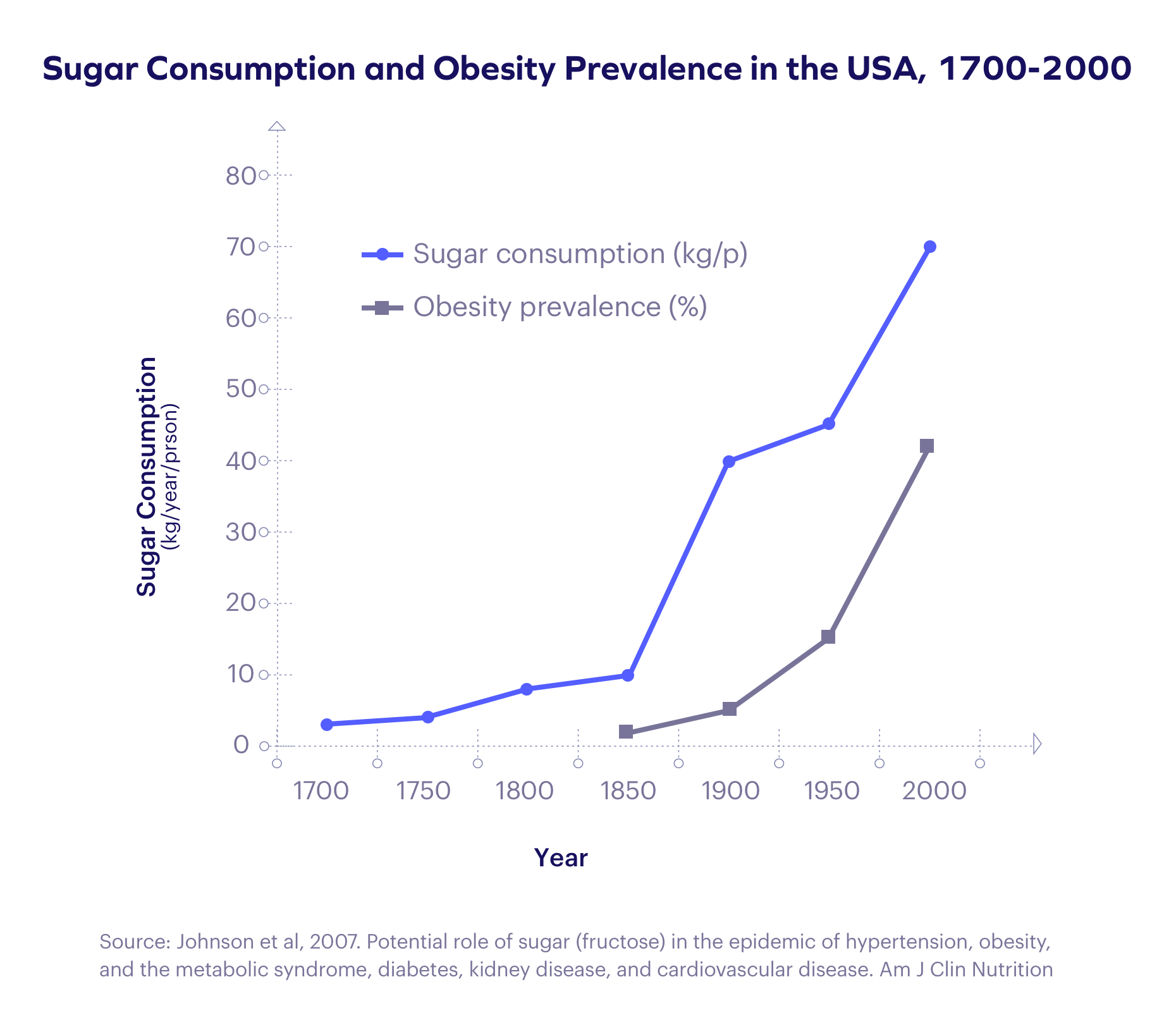How can we help?
Email us at hello@cheershealth.com anytime or browse below.

Get 15% off!
+ first dibs on secret sales
🇺🇸
Made in the USA
with globally sourced ingredients.
✅
GMP Registered
Good Manufacturing Practices
Everyone knows that alcohol is bad for their liver, but few recognize that added sugar is a similar villain that’s worthy of just as much focus.

As can be seen in the chart above, there is a direct correlation between Americans’ consumption of sugar and obesity. This rise in sugar consumption is not only linked to obesity but also the rate of fatty liver disease—especially as sugar is unique in its stresses on the liver through one of its molecules called fructose.
Increased sugar consumption, poor diet, and little to no exercise all work together to increase levels of obesity and widespread fatty liver disease—of which, an estimated 80–100m Americans already have.
According to the American Heart Association, there are two types of sugars: naturally occurring sugars and added sugars. Naturally occurring sugars are found in food such as fruits (fructose). Added sugars, on the other hand, include any sugar or sweetener that is added during any preparation or processing of food and beverages. Added sugars are comprised of a combination of fructose and sucrose — and it's in nearly everything. One review of the consumer packaged food market revealed that over 80% of all goods contained added sugar, so it’s very difficult to escape.
HFCS can go as high as 90% fructose and 10% glucose. And fructose is gram per gram as hard on your liver as alcohol.
According to a 2010 article in the LA Times, many soft drinks contain high fructose corn syrup (HFCS) that are around 60–65% fructose. Additionally, fruit juices are riddled with it and often can be worse for you than certain soft drinks. As far as how hard your liver has to work, you could be better off having a nice dry (and near sugar-free) cabernet than a large glass of grape juice.
Sugar is proven to be bad for you, but we’re still consuming more sugar than ever. In fact, the leading source of these added sugars are coming from beverages. This is important to note because many of these beverages are disguised as a “healthy” alternative to soft drinks in some way — whether it’s a fruit juice or an electrolyte-focused drink.

Sometimes added sugar isn’t clearly written as “sugar” on the label. If you’re looking for added sugars on a nutritional label of a food or drink, you can find added sugars in any of the following ingredients:
Governmental dietary guidelines suggest limiting your intake of added sugars to 100 calories per day, or 24 grams — if you have one 12 oz can of Coke, you’re already over your daily intake (39 g of sugar).
If you are a drinker, which means you additionally tax your liver through alcohol, you should always pay a large amount of attention to your liver’s other taxes, such as your sugar intake—and thereby, your fructose intake.
Robert Lustig, is arguably the most prolific researcher on fructose and metabolic syndrome.What Lustig found in his practice was that there was an extremely strong link between the consumption of sugar and the prevalence of metabolic syndrome. His research throughout the past decade has gone to show just how accurate this observation is. Lustig often is looking at the systemic diseases that typically kill the most people, such as diabetes, hypertension, heart disease, cancer, etc. However, as drinkers, one of the main overlaps between our concerns and those of Lustig come in the form of liver disease.
Through his research, he sheds light on a number of topics. But, one of our main takeaways for drinkers is this: Aside from effects in the brain (i.e., the “buzz” that comes from alcohol), alcohol and fructose are almost identical metabolically. And thus, are very similar in their effects on liver health.